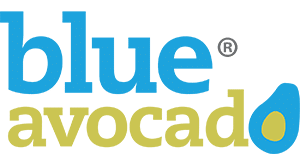An Agreed-Upon-Procedures (AUP) Success Story
CPA Dennis Walsh discusses how using an Agreed-Upon-Procedures Engagement can done at much lower cost than audits to benefit nonprofits.

Demonstrate that your nonprofit has properly working internal controls.
In Southeast Alaska, the United Way coordinates the federal government’s Combined Federal Campaign (CFC). In 1998, the CFC required an audit when program revenues exceeded $100,000. Southeast Alaska had many nonprofits with revenues over $100,000 but less than the federal single audit threshold (currently $500,000), above which a financial statement audit is mandatory for entities receiving federal funds.
“Given that many of these organizations were only receiving a few thousand dollars or so from the United Way/CFC, it hardly made sense for them to continue to receive these funds if it only meant that they were going to have to turn around and pay them out as audit fees,” noted Max Mertz, CPA, a partner with Elgee Rehfeld Mertz, LLC, in Juneau. The cost of an audit to these small nonprofits was typically $4,000 or more.
Fortunately, according to Mertz, the United Way board was enlightened enough to see the value of accepting his proposal for an agreed upon procedures engagement as an alternative to a financial statement audit.
It satisfied the CFC accountability requirements and lowered costs to the United Way member nonprofits. His firm typically charges nonprofit organizations $1,500 for this service.
Using this approach, the engagement targets a key area for nonprofit boards, that their organizations have properly working internal controls. And for United Way contributors, it targets what they are concerned with the most, that their contributions are safeguarded and properly used.
Mertz’s firm has since seen many of its other nonprofit clients with no external audit requirements also adopt this engagement, demonstrating their fiduciary responsibility by opening their systems of internal controls to CPA inspection.
Additionally, Mertz has found the AUPE to be more responsive than the audit standards to the needs of many of these small nonprofits because the engagement focuses on controls over disbursements, receipts, and regulatory compliance with government agencies. By contrast, an audit, even with the recent risk assessment revisions, looks at controls only for the limited focus of financial reporting.
As a side note, while an audit is designed to help reduce the risk of undetected material misstatement in the financial statements, the common perception that it is designed to uncover fraud is misplaced. “Fraud is identified in only a small percentage of audits,” said Betsy Lowder, CPA and CFO of the United Way of Greater High Point, North Carolina. “More fraud is detected through whistleblower action and organizations should consider adopting a whistleblower program,” she added.
CPA Terry Lancaster of Charlotte, North Carolina (C. DeWitt Foard and Company), finds the AUP engagement useful for nonprofit clients that want to test staff compliance with accounting systems and evaluate the efficiency of their systems: “This type of engagement is useful if the client has no need for audited financial statements but still wants some level of assurance that good procedures have been established and are being followed. Typically, our fee is approximately half that of a full audit.”
But an AUP will serve as an audit substitute in only limited circumstances, particularly when dealing with grantor agencies. “I think the question you need to answer is: Who am I reporting to and will they accept the report? You will need to discuss this up front with the grantors or whomever you are reporting to and get their buy-in.
This, of course, is not necessarily an easy thing to do with government bureaucracies,” Mertz commented.
You might also like:
- Your IRS Form 990 Questions Answered
- The Million-Dollar Question: What Could Your Nonprofit Do if Money Weren’t an Issue?
- Treasurers of All-Volunteer Organizations: Eight Key Responsibilities
- The Ultimate Guide to Nonprofit Fundraising in 2025
- An Easy-to-Use Accounting Procedures Manual Template
You made it to the end! Please share this article!
Let’s help other nonprofit leaders succeed! Consider sharing this article with your friends and colleagues via email or social media.
About the Author
Dennis Walsh, CPA, volunteers his post-retirement time helping North Carolina nonprofits with accounting concerns, work for which he received the Community Service Award from the Guilford Nonprofit Consortium. He shares his expertise nationally with nonprofits through Blue Avocado. He has also published “Legal & Tax Issues for North Carolina Nonprofits” and Man From Macedonia, a memoir by civil rights leader Aaron Johnson. Dennis also authored the Blue Avocado article Nonprofit Bookkeeping Test, which is one of the ten most viewed Blue Avocado articles of all time. A version of this article was published by the Planned Giving Design Center.
Articles on Blue Avocado do not provide legal representation or legal advice and should not be used as a substitute for advice or legal counsel. Blue Avocado provides space for the nonprofit sector to express new ideas. The opinions and views expressed in this article are solely those of the authors. They do not purport to reflect or imply the opinions or views of Blue Avocado, its publisher, or affiliated organizations. Blue Avocado, its publisher, and affiliated organizations are not liable for website visitors’ use of the content on Blue Avocado nor for visitors’ decisions about using the Blue Avocado website.







